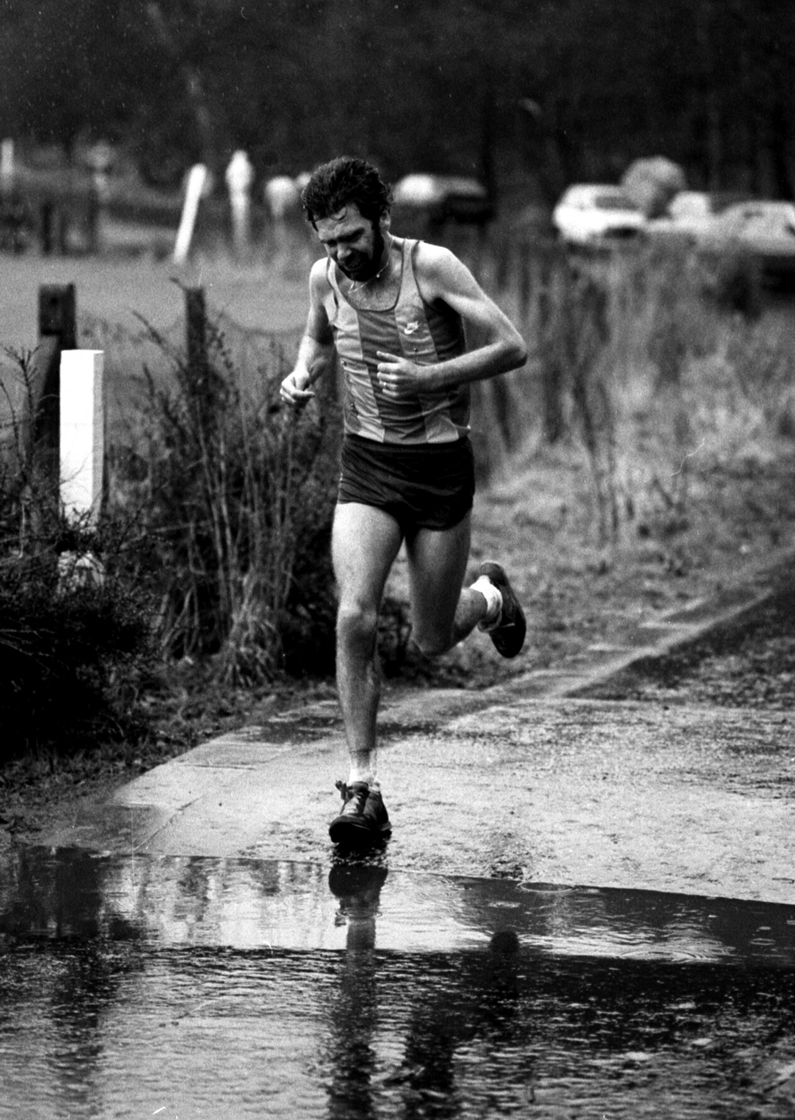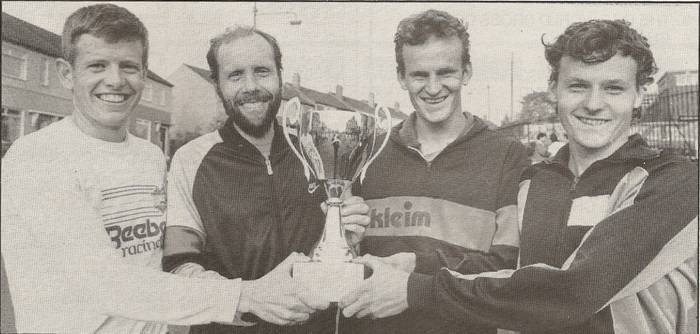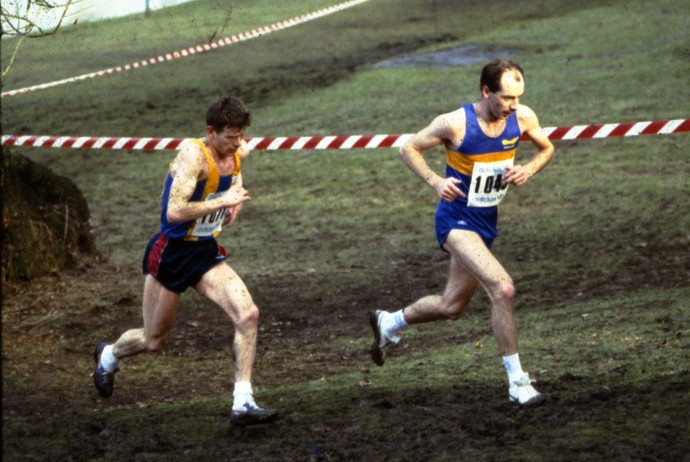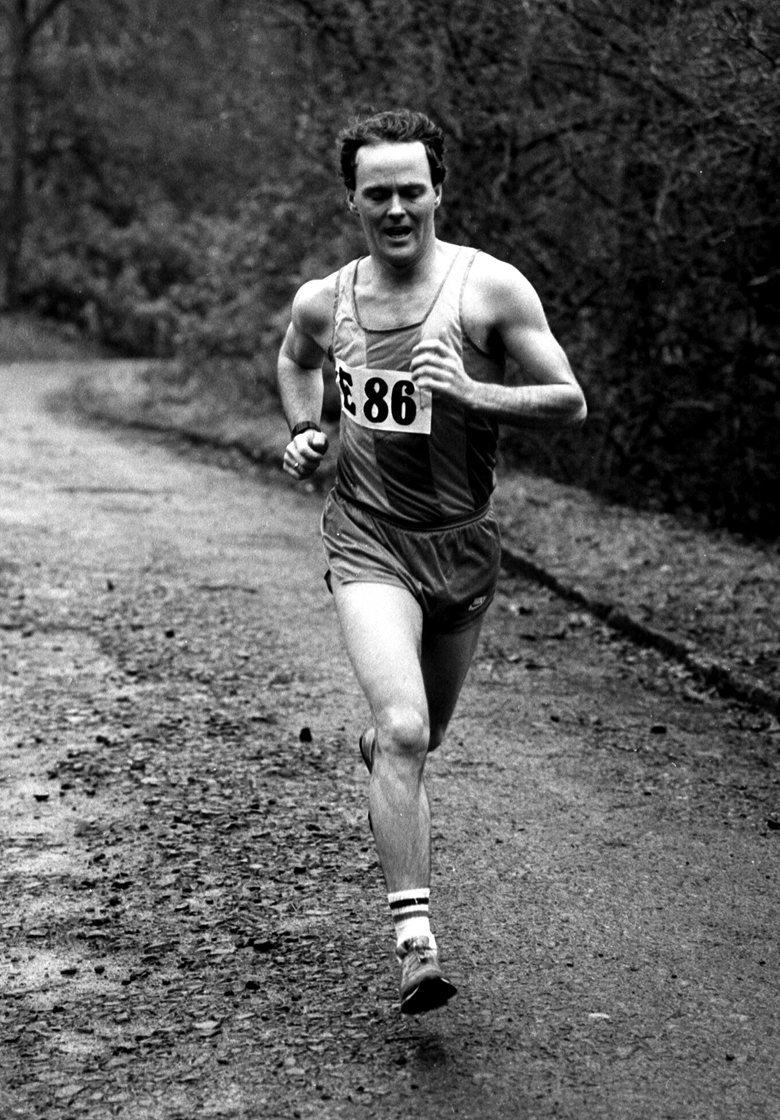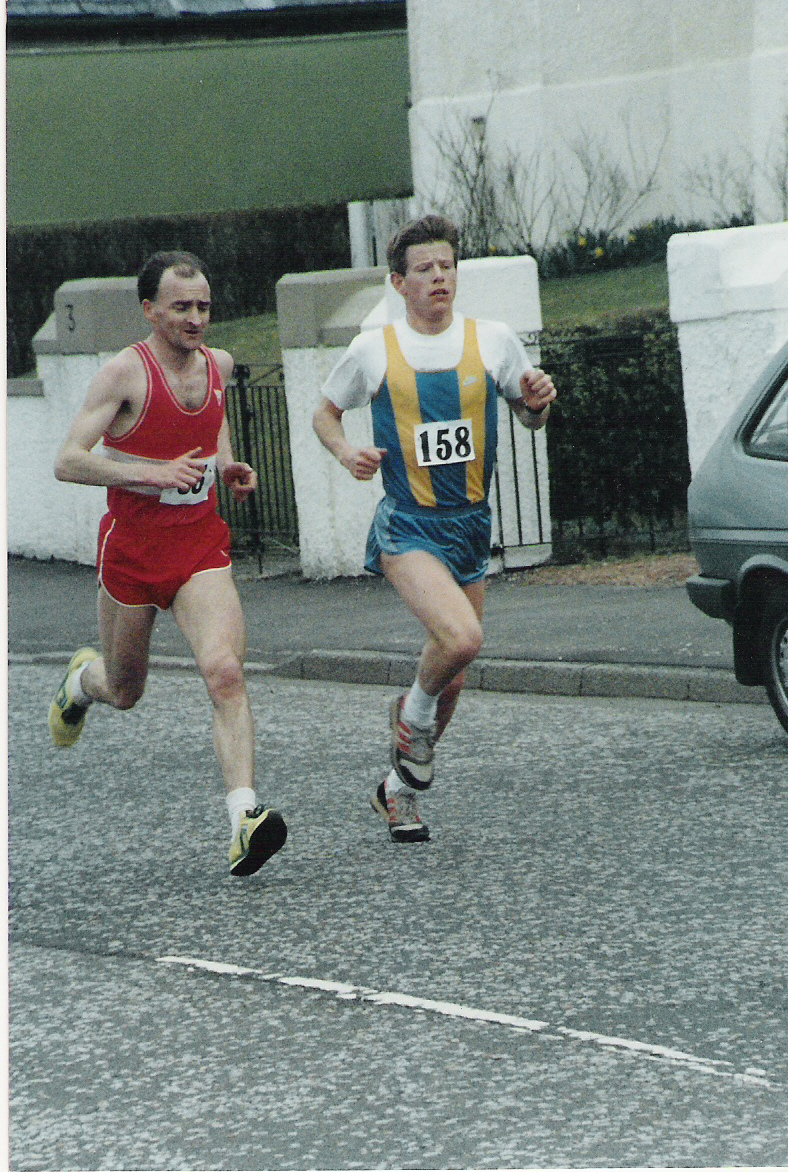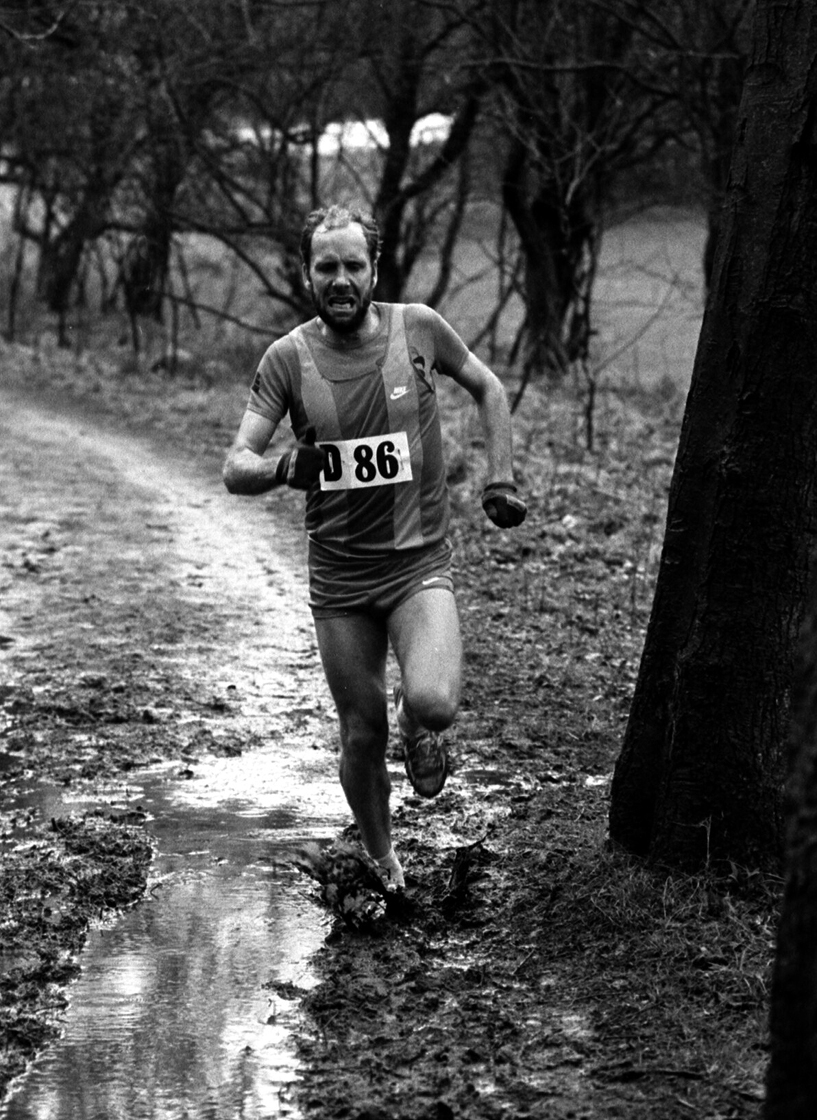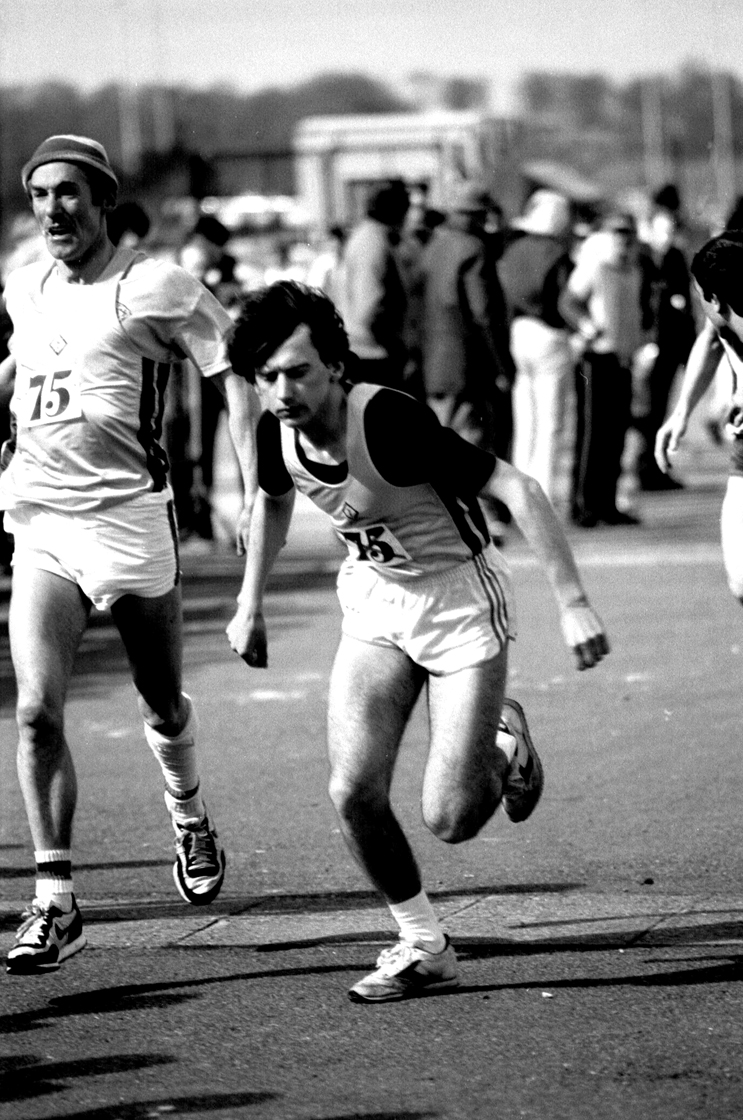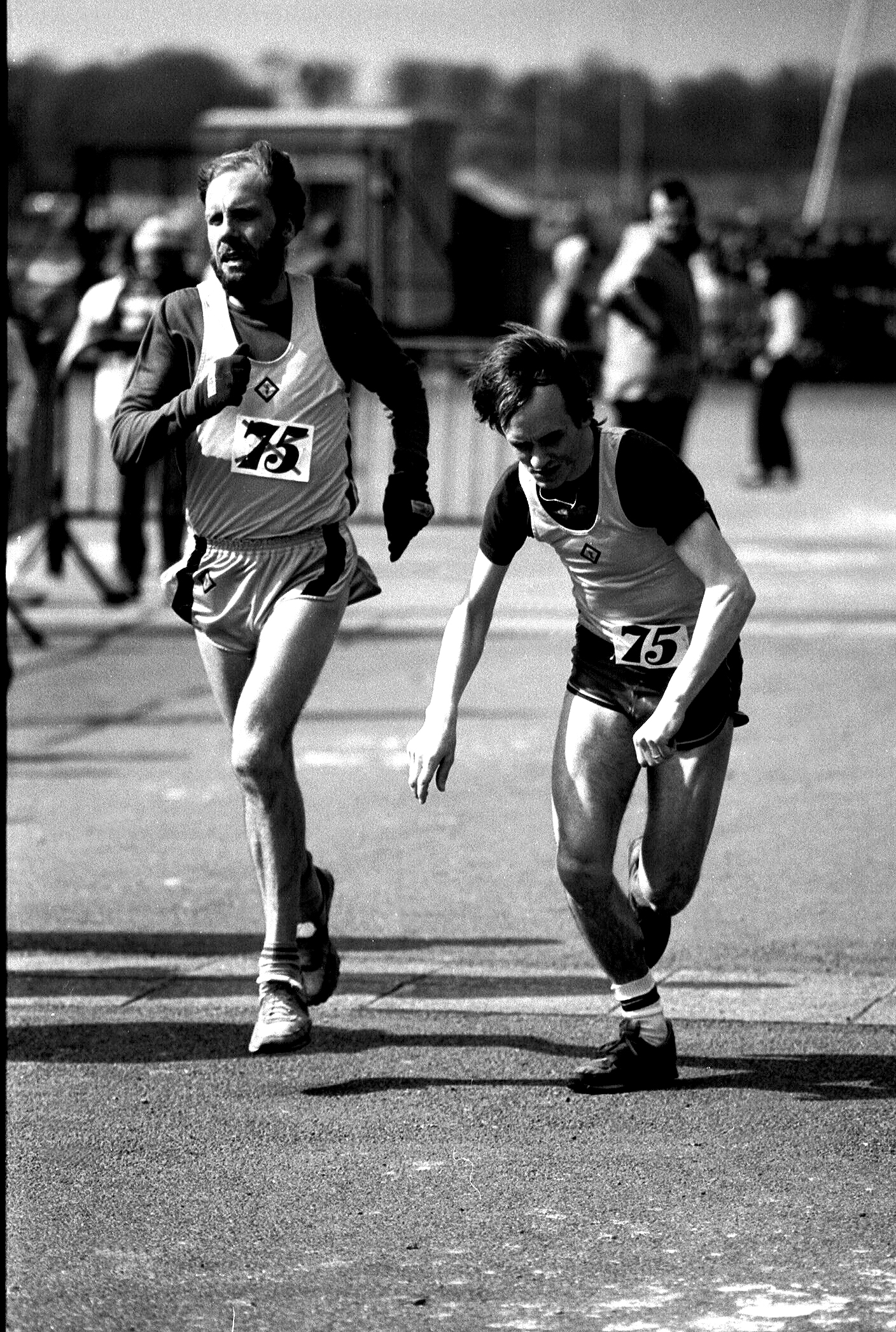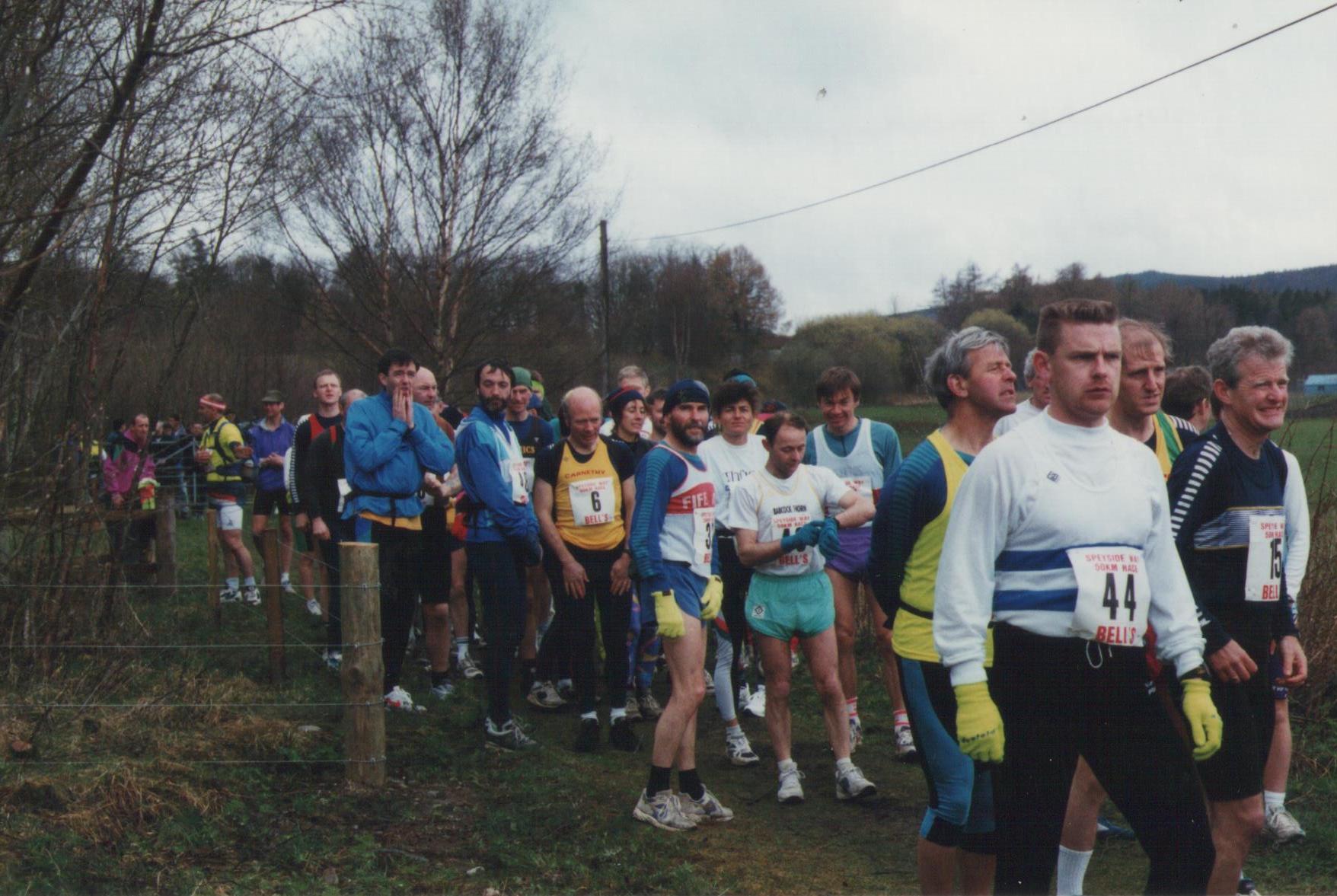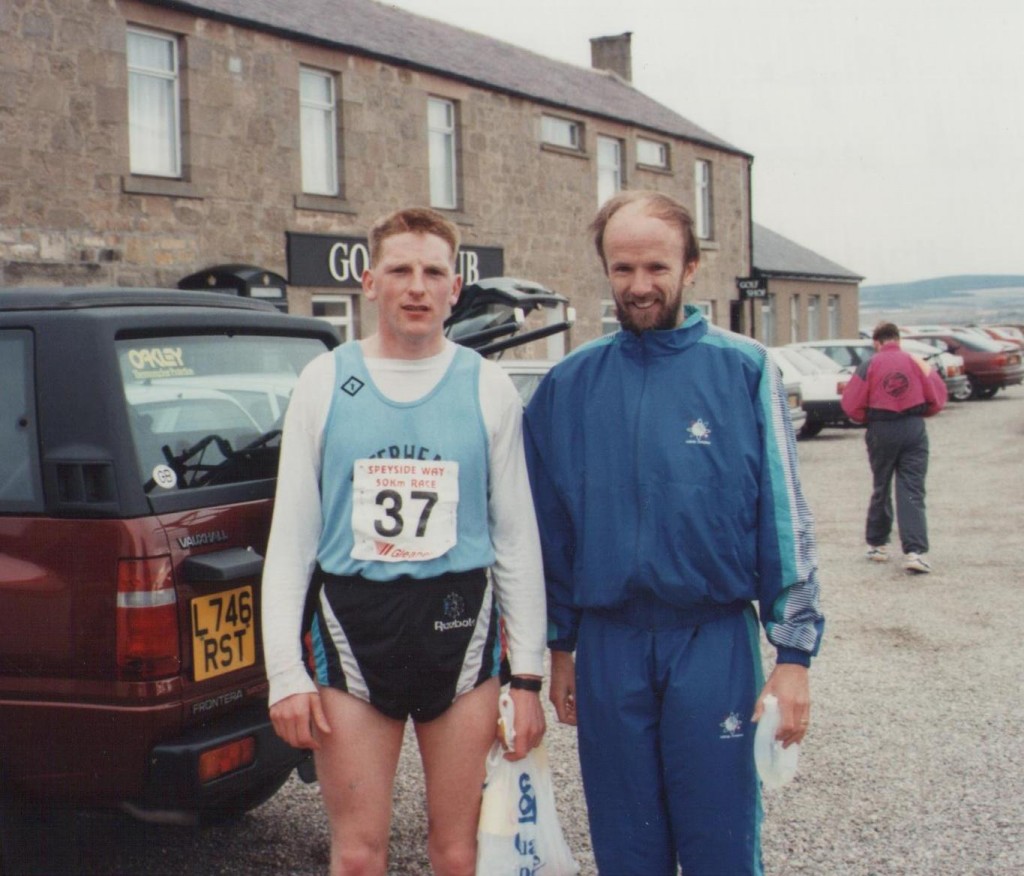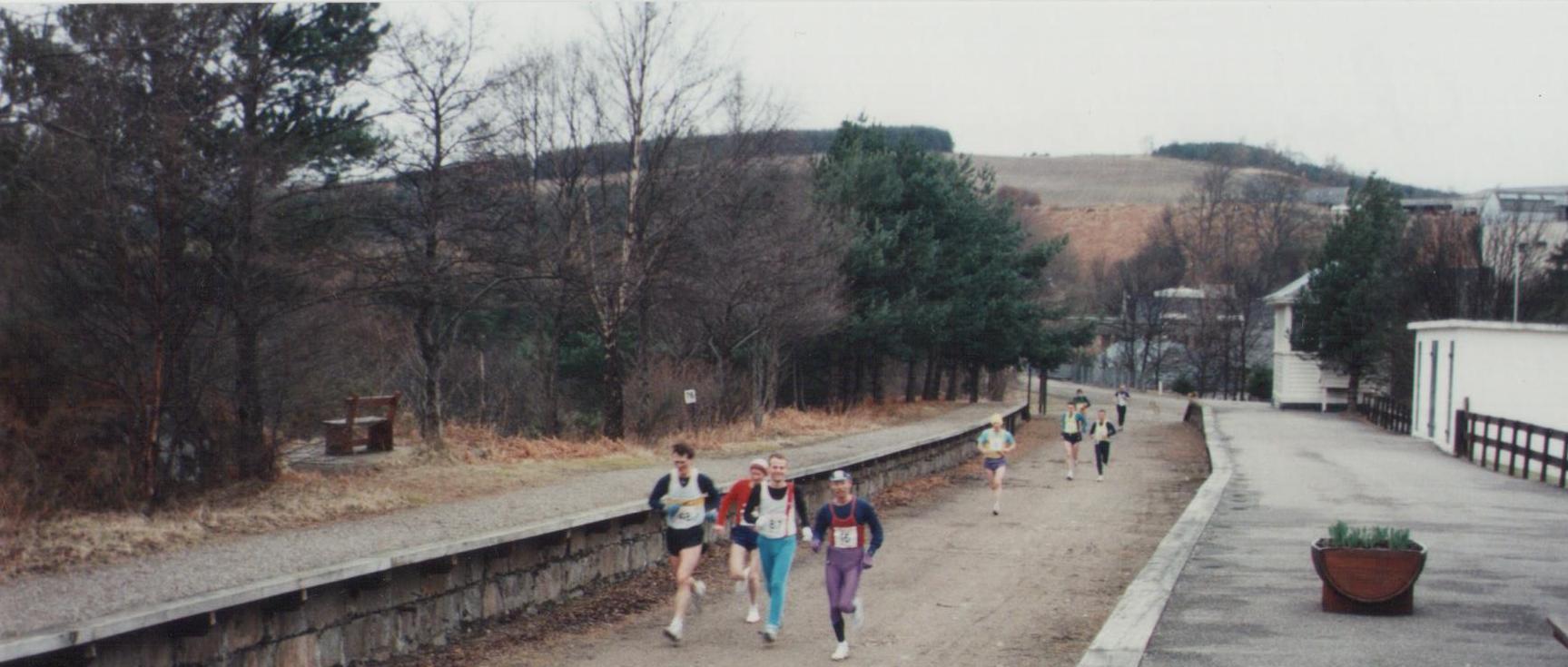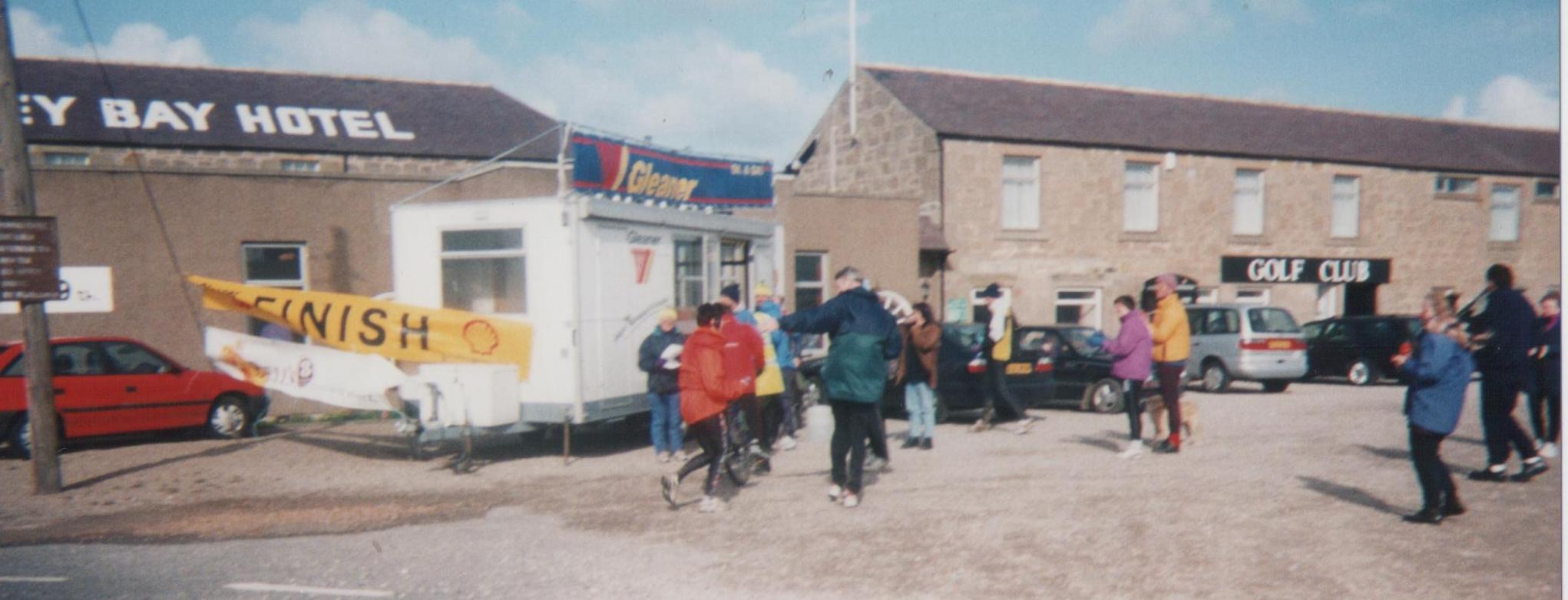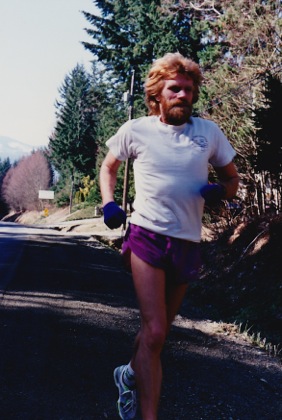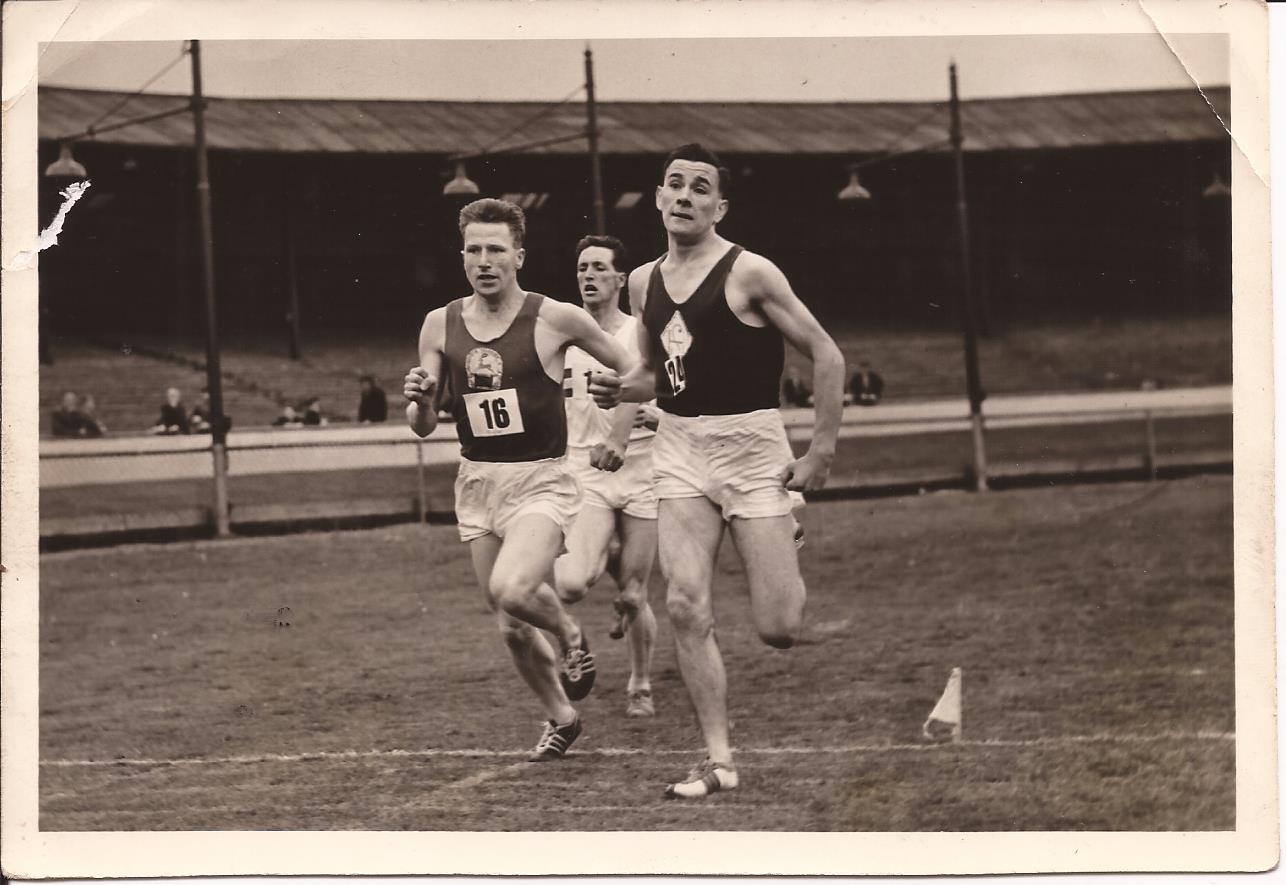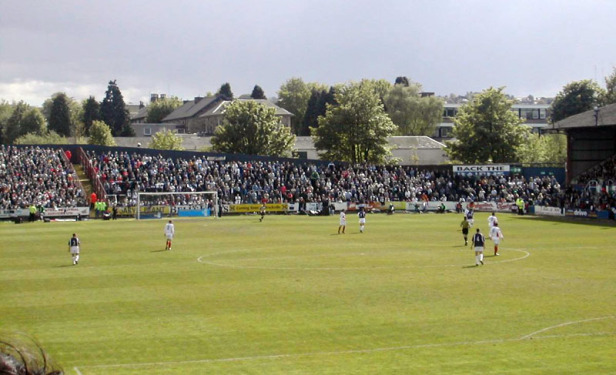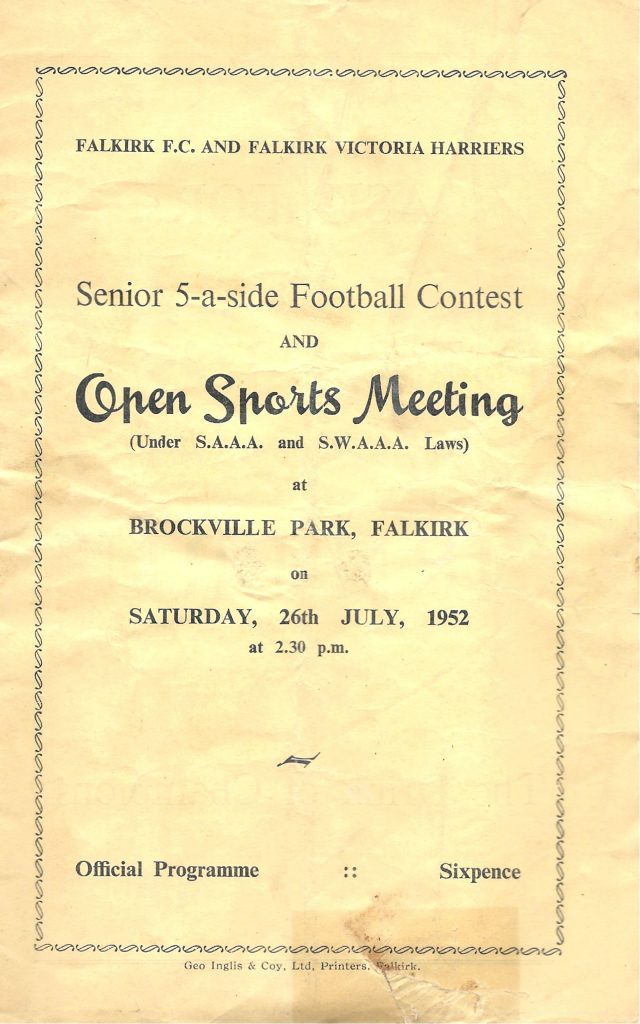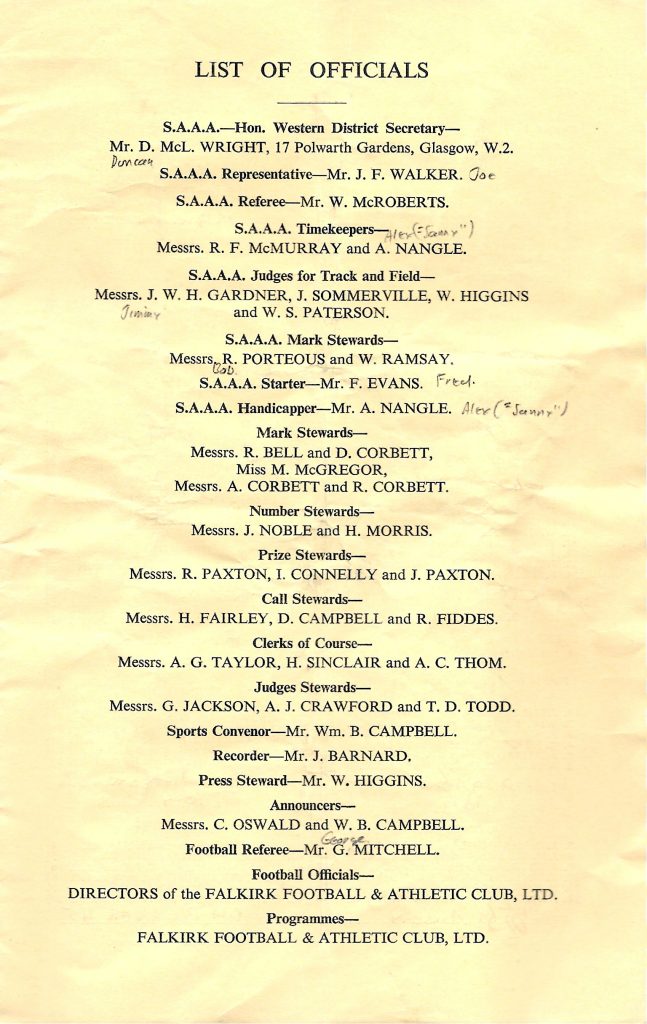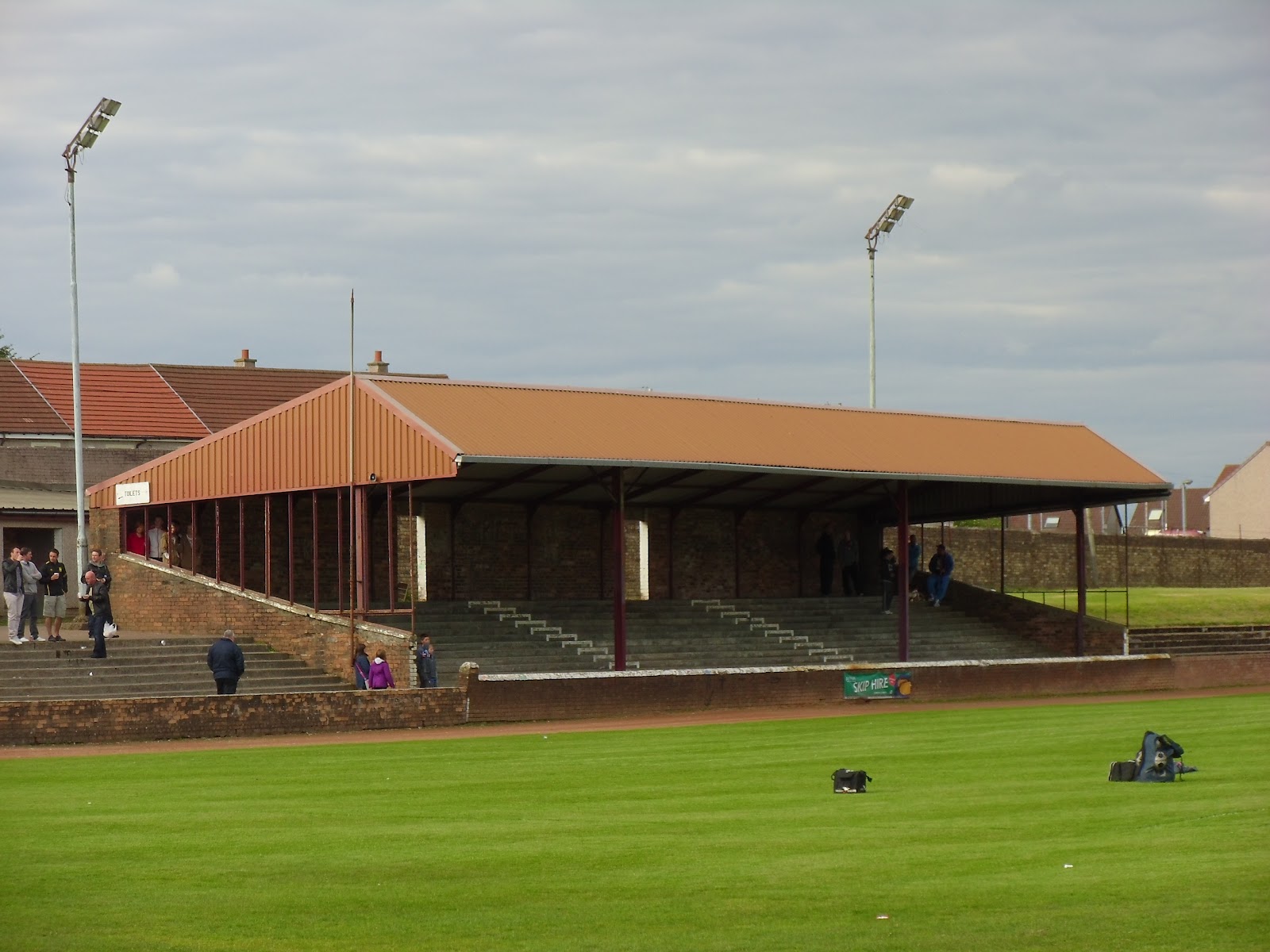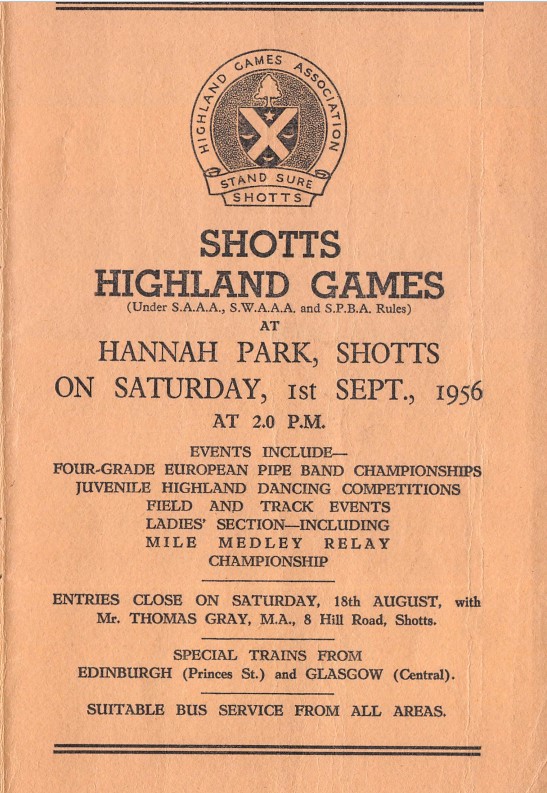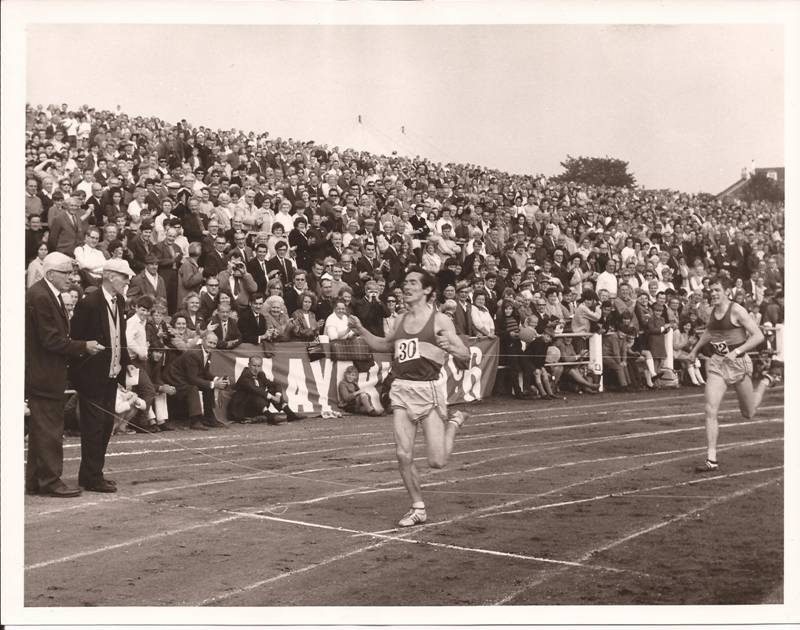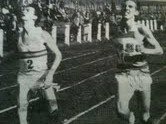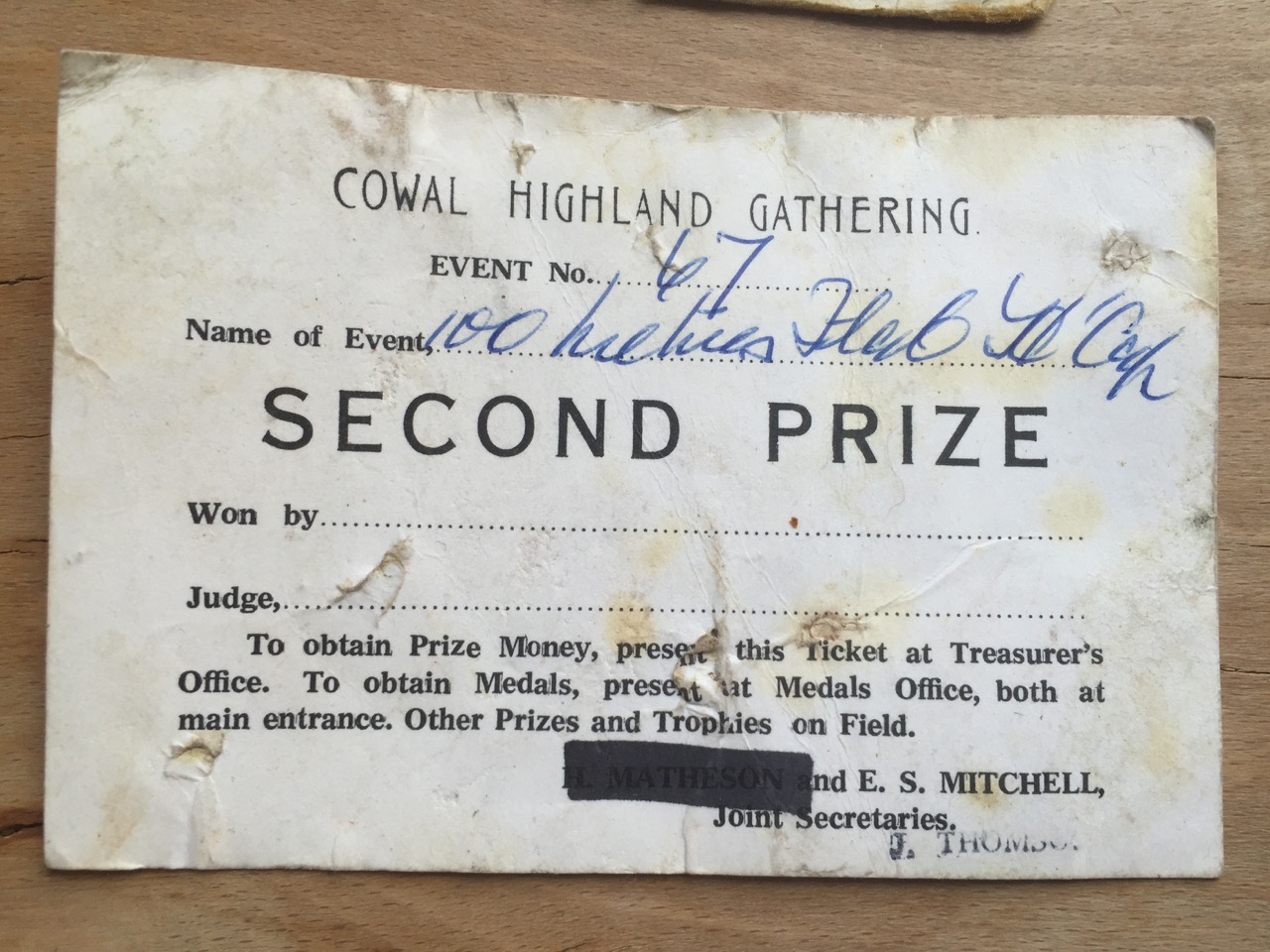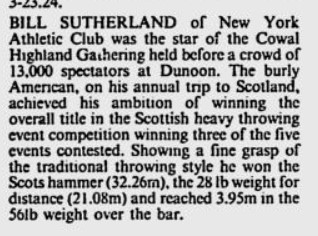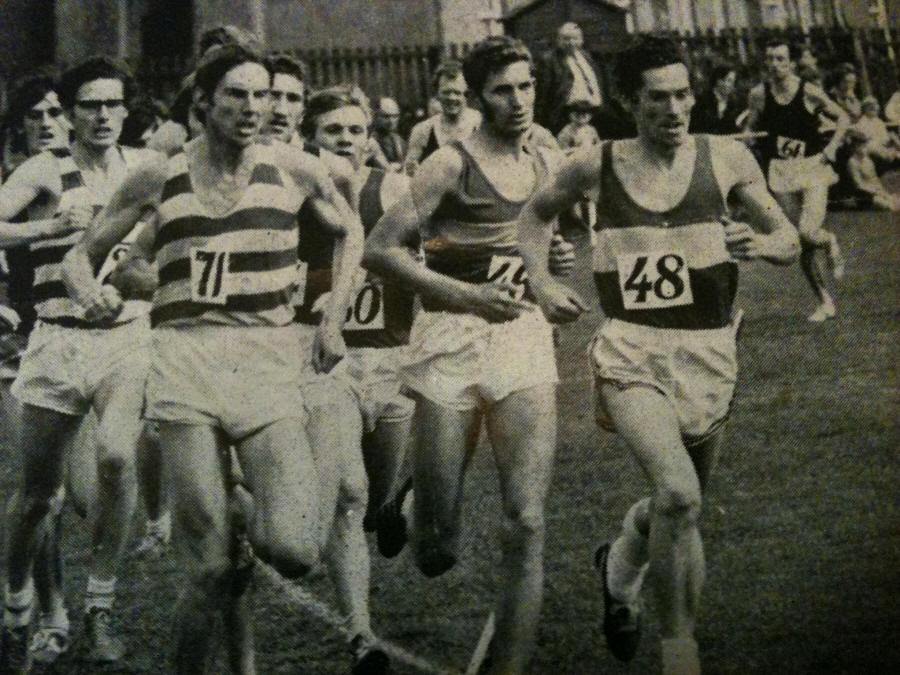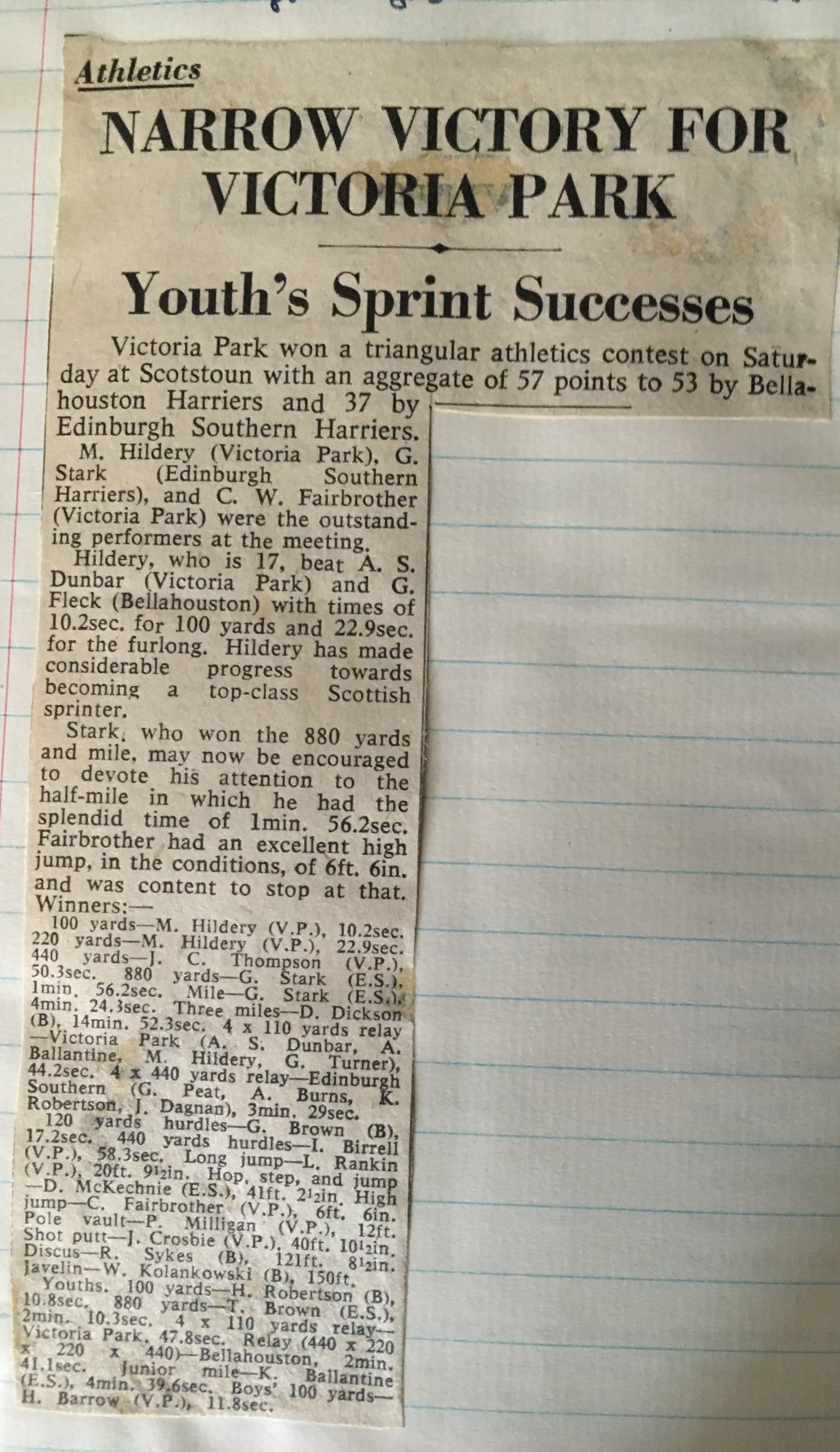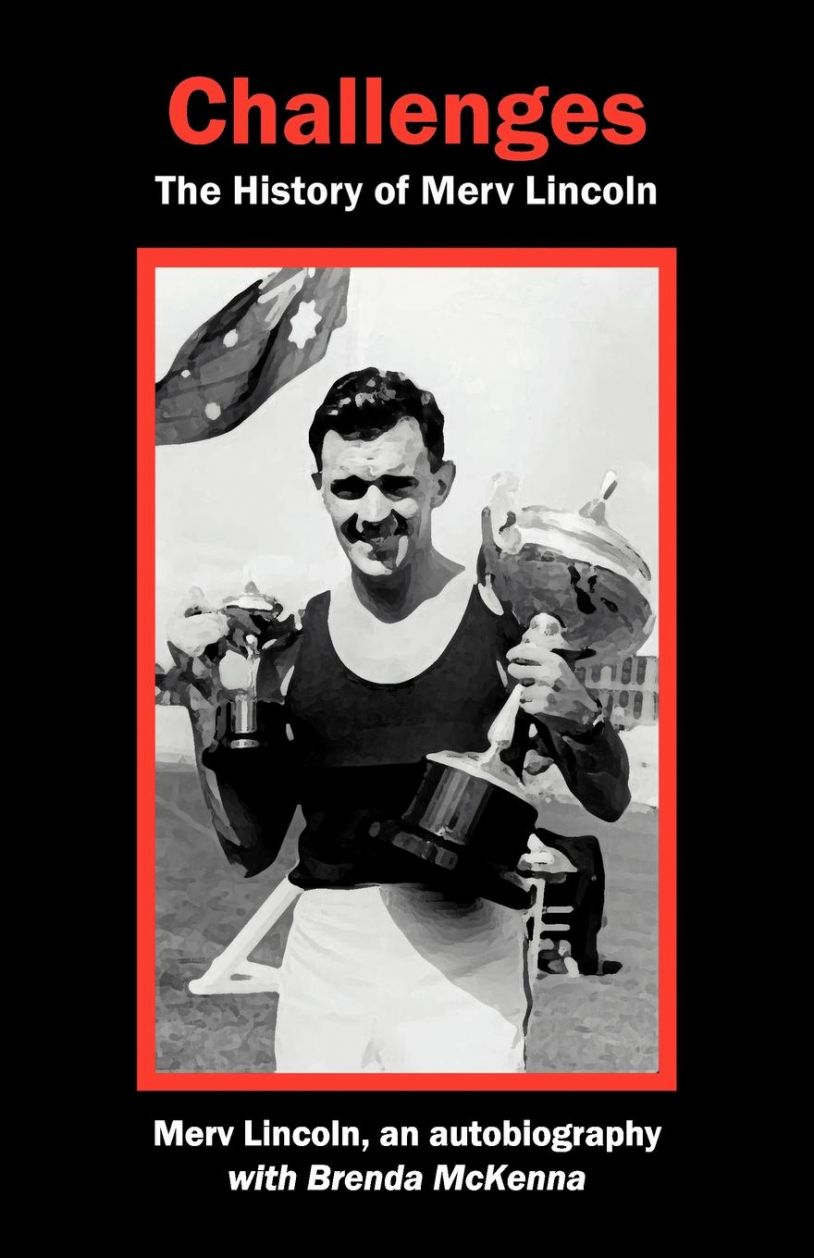The following articles have been passed on by Colin Youngson and have been written by Roger Robinson Before we start it might be appropriate to quote the following:
“This article appeared in “Marathon & Beyond” (now deceased). Its research findings – for instance, that the man with the moustache and arm-band was not Conan Doyle, that the track was three laps to the mile, and that the distance was wrongly stated as 40km in the instructions to competitors – have become accepted as standard in later books.
Roger Robinson is co-author of 26.2 Marathon Stories (with Kathrine Switzer, Rodale, 2006). His article “The fascinating struggle” develops some of his research for that book. Senior writer for Running Times and a frequent Marathon & Beyond contributor, he is also author of Heroes and Sparrows and Running in Literature (Breakaway, 2003), as well as literary titles such as the Oxford Companion to New Zealand Literature and Robert Louis Stevenson: His Best Pacific Writings. He is Emeritus Professor of English, Victoria University of Wellington, New Zealand, and lives with his wife Kathrine Switzer on hills in Wellington and New York’s Hudson Valley.”
- LONDON, 1908 (Roger Robinson’s choice for greatest Olympic Marathon)
They started outside Windsor Castle, with the royal family picnicking on the lawn, 26 miles 385 yards from the finish line in White City Stadium. If you ever find a marathon one mile too far, blame British royalty. Perhaps inspired by the presence of the Princess of Wales, a big group of British runners went out fast, news that delighted the huge crowd waiting in the stadium. But it was too fast, given 1908 training and the day’s hot sun. Two survived to 10 miles, but 56:53 was still suicidal. Soon it was the big South African Charles Hefferon in front, shaking off the little Italian Dorando Pietri. Behind, the pre-race favorite, Canadian Indian Tom Longboat, attacked hard, raced through to second at 16 miles, but by 17 was walking. To quench his thirst he was given champagne by his bicycle attendant, which probably did not help. Hefferon led by two minutes at 15 miles, by nearly four at 20 miles. The race was surely his. But those days no one understood how suddenly the tank can go dry in a marathon. Pietri caught Hefferon at 25. Now began the drama that entered the consciousness of the 20th century. Pietri was heat-exhausted. He collapsed, unseen by the crowd, in the passage into the stadium. Then he entered, to the roar of 100,000 spectators. But he was shuffling, staggering, and confused. Officials had to turn him the right way for the final half circuit of the big (three laps to the mile) track. He floundered a few steps, then crumpled. Officials and medical attendants ran to help. “It was impossible to leave him there, for it looked as if he might die,” said the official report later. Lifted to his feet, he covered a few more yards, and fell again. The crowd demanded that he be helped. Twice more he was rubbed and raised, twice more he stuttered a few yards and collapsed. “Surely he is done now,” wrote Sir Arthur Conan Doyle, observing from the stand. Now the next runner appeared, Johnny Hayes of the United States, who had judged the distance perfectly, and (I have calculated) was moving at close to 6-minute miles at the end. As Hayes reached the final bend, Pietri was on his feet once more, and with floppy legs and dazed face, supported at the right elbow by race manager Jack Andrew, he tottered to the tape. Thus was created one of the iconic sports images of all time. Pietri was hastily declared the winner, there was a protest, Hayes properly replaced him, controversy raged, and the marathon footrace entered the world’s imagination as the ultimate challenge to human endurance.
Run-up to the Olympics 5: For weekend reading, my story of the most famous marathon of all time, the 1908 Olympics, full of original research. The first photo (before the finish) settles whether Pietri received “assistance!” But why did the Brits want him to win? American readers, avert your eyes!
The fascinating struggle
Part 1: Near-death drama at the Great White City (London 1908)
Roger Robinson
“He has gone to the extreme of human endurance…It is horrible, and yet fascinating, this struggle between a set purpose and an utterly exhausted frame.” – Arthur Conan Doyle on Dorando Pietri
It is the fantasy moment all marathon runners imagine during training runs on cold wet nights – you’re running through a dark tunnel and out into the bright sunlight of the stadium – and then, that sudden swelling roar of acclamation rises from a hundred thousand people. Your blood races at the very thought of it. No other moment in sport, however thrilling, is quite like this one. There are great touchdowns, and soccer goals, and home runs, and sprint finishes to one-mile races; but we watch and analyze the unfolding plays that precede each of those – we are witness to the whole drama. At the finish of a marathon, the stadium crowd sees only the final minute of a 3-hour narrative. And for the runner the moment of encounter is just as sudden – 26 miles of lonely effort, then this sudden welcoming rapture.
It happens in a second. The crowd has waited, often with limited information. It mutters and shuffles and worries and waits – and then, he’s there, in front of you – he or she, since that iconic emergence into the sunlight by Joan Benoit in 1984. So much significance is condensed into that first glimpse of the marathon leader – an arrival that is the beginning, not the end, of the drama, a hero completing a journey, on the edge of triumph, yet still not quite there, visibly tired, terribly vulnerable, a tiny figure on a huge arena. Few moments are so expressive of human heroism and human frailty, the aspirations and fears we all share. Even as we roar in praise, we are looking anxiously or eagerly for the next runner. The runner’s sense of completion is also full of fear.
That moment has never been more dramatic than on July 24, 1908, at the Olympic Games marathon in London. Ten minutes earlier, a gun and a megaphone announcement, “The runners are in sight,” had told the crowd that they were near, but gave no names. “Finally after what seemed to be an intolerable suspense a runner staggered down the incline leading to the track,” wrote the New York Times. Down the sloping ramp and out on to the crunching cinders came a small, slight man in a sodden white tee shirt and baggy knee-length red shorts, a white handkerchief on his head. It was the Italian Dorando Pietri. And the crowd roared.
Earlier bulletins had brought them the welcome news from the course that some of the twelve British runners went out fast into the lead, and that two were still well ahead at 10 miles. Later the announcement was that South African Charles Hefferon was in front by nearly four minutes at 20 miles. For a British crowd, a South African winner born in England was nearly as good as a Briton in 1908, only six years after a bruising war had given Britain that last major colony. Better the South African than the young Canadian Indian Tom Longboat, who was the pre-race favorite following his record-breaking win at Boston in 1907 – but who was suspected of having taken money for running. Far better Hefferon, most of the crowd thought, than any of the twelve Americans, whose team had won many events and few friends in those conflict-ridden Games.
But when you’re waiting for the marathon leader to appear, nothing is certain. It was not the big white South African but the little dark Italian who by some miracle entered the roaring furnace of the Great White City (as the stadium was known). And the crowd cheered him a welcome from his dreams.
The dream was already a nightmare. At the very moment he appeared and was acclaimed, his frailty was evident. He staggered and shuffled rather than ran. He “reeled as he entered and faced the roar of the applause,” wrote Arthur Conan Doyle (see “The Man With the Armband”). “It was evident at once to everyone that the man was practically delirious,” wrote the New York Times. He stuttered slowly out on to the cinder track, tried to turn the wrong way, encountered officials bewilderingly shouting and gesticulating at him, stopped in confusion, “afraid that they were trying to deceive him” (New York Times). He finally turned (or was turned) the right way, began to shuffle again. “He staggered along like a man in a dream, his gait being neither a walk nor a run, but simply a flounder, with arms shaking and legs tottering” (New York Times). Wavering from side to side, he covered about twenty yards – and then, to the horror of nearly 100,000 people, his legs crumpled and he fell. He was directly in front of a huge packed stand, and the people held their breath. Some thought he had died.
We might think that the noise or heat of the stadium overcame Pietri, but it is a little known detail that he had already collapsed on the way into the arena. The marathon medical officer, Dr Michael Bulger, reported, “I was first called to Dorando in the passage leading to the stadium. He was in a state of absolute collapse and quite pulseless. In a short time he recovered sufficiently to enter the stadium.”
Now he was down and out in full view of the crowd. Officials ran to help the stricken runner. Later, Pietri lamented that the runners’ official bicycling attendants were not permitted inside the stadium. “If I had had my attendant to guide me and give me such aid as I was entitled to, I could have finished without falling again,” he said (through his half-brother as interpreter).
“There were wild gesticulations. Men stooped and rose again,” wrote Conan Doyle. All was confusion, and I’m trying to say only what I’m sure from contemporary sources did actually happen. Even eyewitness reports vary wildly. “He had to do one round of the arena [in fact it was half a lap] where unfortunately he was helped up, and so disqualified.” (Lady Metcalfe, letter to the Daily Telegraph, September 1965). “My recollection is that Dorando, on arriving at the track, was followed by a few enthusiasts…who patted him on the back. This no doubt caused his collapse.” (G. Chapman, letter to the Daily Telegraph, August 1965). Think how hard it is to get agreement on exactly what happened in the Budd/Decker incident in 1984 – and that was televised and recorded on video.
The official report probably gets nearest to a clear account. “As it was impossible to leave him there, for it looked as if he might die in the very presence of the Queen and that enormous crowd, the doctors and attendants rushed to his assistance. When he was slightly resuscitated the excitement of his compatriots was so intense that the officials did not put him on an ambulance and send him out, as they no would doubt have done under less agitating circumstances.” (T. A. Cook, Official Report of the Olympic Games of 1908).
Pietri now struggled, or more probably was helped, to his feet, tottered along the rest of the long straight, “the little red legs going incoherently,” as Doyle wrote. “Driven by a supreme will within,” he reached the curve, and “there is a groan as he falls once more” (Doyle). “The crowd shouted that he should not be left there, perhaps to expire in front of them all,” said Lord Desborough, the starter and referee, on a 1960s BBC radio program (“Scrapbook for 1908”). Up again – “a cheer as he staggers to his feet” (Doyle) – Pietri covered only a few yards before crumpling at the top of the bend. This time there is a photograph, showing him lying on his back, supported in the arms of the medical officer, Dr Bulger (see “The Case of the Man With the Armband”), with another man touching, perhaps massaging, his leg. Pietri looks totally out of it – eyes shut, limbs soggy, face shattered. He seems to have passed out. How he got to his feet again I can’t imagine, but he did, almost certainly with plenty of help. He got round the bend, “in the same furious and yet uncertain gait. Then again he collapsed, kind hands saving him from a heavy fall” (Doyle). And again the crowd gasped in horrified sympathy. Only about sixty yards remained to the white tape stretched across the track in the middle of the straight. But Pietri was down. “Surely he is done now. He cannot rise again,” writes Doyle, with the dramatic immediacy of a commentator on live radio or TV.
And now things became really exciting. The next runner appeared, the striped shield of the USA on his white shirt. It was Johnny Hayes, a New Yorker of Irish parentage. And he was charging – “going gallantly, well within his strength,” wrote Doyle. Hayes had run a perfectly judged race when everyone else was going bananas. The Brits ran the first mile in 5:01, and 1908 training and 1908 road surfaces simply did not give you a 2:11 marathon. Perhaps they were carried away by the presence of Mary, Princess of Wales at the start (see “Not in the Nursery”). She received a telegraph from Queen Alexandra, and thereupon commanded Lord Desborough to fire the gun. With that royal inspiration two of the Brits reached 10 miles in a still suicidal 56:53. Hefferon and Pietri were on 57:12 – also much too fast, on that training, on a hot day, on a course that was mostly dirt and stone and crossed cow paddocks at 25 miles. But Hefferon and Pietri had enough in reserve to sweep up the Brits by 14 miles, where Hefferon moved powerfully away – too powerfully. On the fifteenth mile he went ahead by two minutes. Then Tom Longboat came up fast – too fast. He was in second at 16 miles. At 17 he was walking. He soon gave up. (“A Special Car will follow to carry competitors who abandon the race,” promised the official instructions.) Longboat’s bicycle assistant was plying him with champagne to quench his thirst, which probably did not help.
Hayes ran the first few miles well back in the field of 56. Some say dead last, but his teammate Joseph Forshaw of Missouri, who came through to 3rd (4th counting Pietri), told the New York Times that Hayes was always ahead of him. Anyway, he went out slow. At 17 miles, probably running with two teammates, he was still six minutes behind Hefferon the leader – which means he was running perfectly. One photo taken at 23 miles shows him, now alone, looking composed and resolute, with a firm stride. Pietri in a photo at the same point looks wobbly – his head on one side, down on his hips. At 25 miles, Pietri had caught Hefferon and they were battling for the lead, but it must have been a battle in slow motion. Hayes was coming on strong two minutes or so behind. Soon after Pietri dropped Hefferon, Hayes scooped him up, and was in second. While Pietri was a crumpled heap on the track, Hayes was powering over the cow tracks across the open space of Wormwood Scrubs towards the ramp into the stadium, running close to 6-minute miles (see below). He appeared. And the crowd roared again – not entirely in acclamation.
How did Pietri ever reach the finish? He got there as Hayes was on the final bend, a mere 150 yards behind, roughly. The famous finish line photo shows Pietri with liquid legs and glazed expression. Clerk of the Course (Race Director in our terms) Jack Andrew is helping him through the tape, with a good grip on Pietri’s right upper arm, holding a huge megaphone in the other hand. Andrew claimed later that he “only caught Dorando as he was falling at the tape,” and Dr Bulger said “I exercised my right in having precautions taken that he should not fall again. Hence the slight assistance rendered by Mr. J.M. Andrew just before the goal was reached.”
The photo does not bear out that interpretation. Andrew is supporting and steering the sagging Italian, and it looks likely that he has had that grip on the arm for some time. Given Doyle’s phrase, “kindly hands saving him from a heavy fall,” Andrew and others were probably alongside him all the way from the second time he fell (within the stadium). Another retrospective eyewitness account recalled, “local officials couldn’t bear to see Dorando lose, so they picked him up and threw him over the tape” (Major N. Leith-Hay-Clark, letter to the Sunday Times, 1964). That makes it sound a little too like the great Australian pub sport of dwarf tossing, but it gets the spirit of the moment.
That is not to criticize Andrew. “Kind hands” is appropriate. The instinct to help a courageous and dangerously exhausted man is a decent one. Dr Bulger had been right with Pietri since the very first collapse on the ramp into the stadium, and seems properly to have taken responsibility on medical grounds. The huge crowd was noisily pleading for Pietri to be helped. Hayes was coming on fast. The place must have been bedlam.
Andrew promptly declared Pietri the winner, presumably announcing it through that giant megaphone. As a long-time stadium announcer, I’m very grateful I wasn’t working that day. The American team immediately lodged a protest, which of course was upheld. They had already lodged four in four days of the Games, which shows something of the tension between the hosts and their most successful guests. It started when the American flag was only at half-mast during the opening ceremony. (Well, it really started in 1776. British Imperialism was at its height in 1908, and America represented its one great failure.) In the 400 meters, the race was declared void, one American was disqualified, all four withdrew, and a single Brit did the re-run final solo. The American Bishop of Pennsylvania, invited to deliver the Sunday sermon at St Paul’s Cathedral in London in the middle of the Games, tried to defuse the dispute by coining the phrase “the important thing in the Olympic Games is not so much winning as taking part.” Baron Pierre de Coubertin at the post-Games Government banquet, only a few hours after the Hayes/Pietri drama, quoted that phrase, and it has become enshrined in the Olympic creed. What Hayes and Pietri thought about it is not recorded.
Anyway, Johnny Hayes was the winner. How well was Hayes running during those climactic final seconds? All eyes were (and still are) on Pietri at the tape, but an important question is whether Hayes was charging him down or struggling along in a similar state of near-collapse. One American spectator said that Hayes “trotted into the stadium as fresh as a daisy,” and Doyle said he was “well within his strength,” but other accounts say things like he “struggled in second, apparently befuddled by strychnine” (Rob Hadgraft, The Little Wonder, p. 220). Jack Andrew also reported that he “assisted Hayes in the same way” as he did Pietri. Why did he need assistance? What shape was he in?
An Italian observer’s sketch reproduced by Martin and Gynn (1979) shows the points where Pietri collapsed, and marks with an X Hayes’s position on the last bend as Pietri reached the tape. Assuming it is accurate (and it fits with Doyle’s and Cook’s accounts), this puts Hayes about 150 yards behind as Pietri reaches the tape (since the full distance on the track was 385 yards). Their finishing times were 2:54:46.4 and 2:55:18.4, a 32 second gap. 150 yards in 32 seconds is 93 second 440 speed, or 6:12 mile pace. (I’m no mathematician so please check). That’s hauling, at the end of a 2:55 marathon, average pace 6:41.
So Hayes finished fast, by any standards. To imagine him at 6-minute mile speed charging in pursuit of the tottering crumpling Pietri is to understand the full frantic drama of that scene. No wonder the crowd was in frenzy. No wonder the officials around Pietri were in a state of near panic. Andrew’s motives in giving Hayes the same “assistance” may not have been as pure as I’d like to think. You don’t need assisting if you can run 6’s. If Hayes “collapsed” or fell down after the line, well, so do plenty of us, and it doesn’t mean we were not running strong.
For astute tactics executed with judgment and determination, few Olympic marathon winners have been more deserving than Johnny Hayes. Next day, after the awards ceremony, he was carried off the track on a table held by six American teammates, with “the Greek trophy” awarded for the Marathon, a statue apparently representing the dying Pheidippides. Pietri had been carried off on a stretcher. But he did not die. He was taken to a hospital where he recovered quite quickly. The New York Times says he “was almost too weak to answer questions when seen tonight [after the race]”, but the next day he looks quite perky in the picture where he is receiving his big gold cup from Queen Alexandra. The New York Times said he “walked briskly around the track and up the steps,” which is more than I could ever do the day after a marathon. He received “a perfect ovation, the people rising in their seats and cheering him for fifteen minutes.” The American part of the crowd “kept up the demonstration long after the others had quieted down.” (New York Times)
The Brits also took the little Italian to their hearts. He became a symbol of gallantry, and of noble breeding. Conan Doyle pronounced portentously, “No Roman of the prime ever bore himself better than Dorando…The great breed is not yet extinct.” If it seems a bit of a stretch to dress up the sweaty little small-town cake maker in a toga as one of the noblest Romans of them all, well, the Brits in 1908 believed in “great breeds,” especially their own, and saw themselves as inheritors of Rome’s imperial destiny. It’s also possible that some of this spin campaign to apotheosize Pietri as the true winner of the marathon might have been meant to take the smile off the Americans’ faces.
No question that Pietri was amazingly gutsy. To get to your feet once after collapsing with heat exhaustion near the end of a marathon is tough. To do it six times is astonishing. Pietri earned his iconic place as a symbol of courage and endurance. But for my money, as a runner, it takes just as much courage to let the entire field in a major race run away from you at the start, sit sedately back while Brit spectators jeer from up every tree, allow the leaders to go away by nearly ten minutes, and wait till after 15 miles before you begin to make any ground on them. That’s really gutsy. The marathon is a sporting event that tests judgment, as well as stamina and courage. By that full test, Johnny Hayes was emphatically the winner. Pietri misjudged by probably only two or three minutes. That extra 1 mile, 385 yards indeed sank him. (Even the program said the distance was 26 miles. The official race rules said 40 kilometers.) But Hayes got it dead right, and all credit to him.
The other thing that Pietri came to symbolize is the public’s mixture of horror and fascination with physical exhaustion. This was the appeal of fights to the death in the Rome Coliseum. A hundred years before the Pietri race, in the early 19th century, the big sport was bare-knuckle boxing, which went on till one contestant was smashed to pulp. Some of the greatest fights lasted over 60 rounds. In the later 1800s, after boxing was regulated, there were still plenty of sporting events where crowds paid well to watch competitors run or walk to exhaustion, as in the six-day “Go as you please” races that have been described in Marathon & Beyond. Pietri went beyond exhaustion in front of the biggest crowd in history, and for the highest stakes. Knowledge of the causes for exhausted collapse was primitive, and included a good measure of sheer superstition. One doctor who examined Pietri at the hospital pronounced, “His heart was displaced by half an inch.” I have never worked out how he knew exactly where it had been to begin with.
It was Pietri’s “supreme will within” that most impressed Conan Doyle. He caught perfectly, in a phrase that deserves to be better known, the appeal of this kind of extreme effort: “It is horrible, and yet fascinating, this struggle between a set purpose and an utterly exhausted frame.”
Some find it so horrible that they disapprove. The London Daily News struck a pose of shocked protest. “Nothing more painful or deplorable was ever seen at a public spectacle…It may be questioned whether so great a trial of human endurance should be sanctioned.” Yet we all love to watch people risk death, even as we fear it, and even though we’re sometimes ashamed of liking it. My brother is a commentator at TT motorcycle racing, and lives every week with a public that is half morbid in its fascination with his sport. I don’t watch Nascar racing but suspect that sometimes there are crashes. It was this element of near-death danger in the Pietri drama that gave the new sport of the marathon its place in the shared human imagination. However purist we are about marathon running, and however positive in our beliefs about it, we have to acknowledge that element in its popular appeal. Having just published a book about the marathon, I know that I could not decline to include the stories of Pheidippides, Pietri and Jim Peters. They are intrinsic to marathon culture.
But Pietri’s sufferings were not the whole story. Look at any photo of the 1908 Olympic marathon, and you’ll be struck by the hordes of spectators. One wonderful picture shows dozens of them who have clambered up trees in Windsor Great Park to get a view of the start. People are lined two deep on Windsor’s Castle Hill in the pictures of the athletes walking up towards the start, and then racing downhill on the first half mile. Several photos in the official report show a crowd at Willesden, about 23 miles, as good as those in modern Brooklyn. “The people who lined the course treated us finely, and they were of great assistance in cheering us up and giving a man heart,” Joseph Forshaw told the New York Times. One estimate I have seen put the crowds at 250,000. I’ve no idea how they calculate these figures, but the crowds were evidently bigger than at Athens in 1896, so it seems safe to say the 1908 Olympic marathon was, in terms of public response, the biggest sports event in history.
Why? It was just 56 under-trained, little-known guys doing something repetitive and not specially interesting that we now know can be done very much better. Yet there was huge public interest. Probably the main reasons are the same that bring out the crowds at modern Boston, London, or New York. (1) A race is a race, the purest and best of all sports contests. (2) The marathon has a sense of historical significance that no other event equals. (3) There is the “horrible fascination” of watching apparently ordinary people heroically push themselves to the extreme that marathon runners do, (4) It’s international so gives the buzz of patriotism, and (5) The marathon happens right outside your front door, yet brings contestants from all over to do battle on your street.
With that 1908 race immediately becoming almost mythic, the marathon entered popular culture, and the English language (and other languages, of course). After the inspiring Greek victory of Spiridon Louis in 1896, the phrase “marathon race” (soon just “marathon”) denoted the new sporting event, with added associations of long and heroic effort. After Pietri, it took on the extra meanings of a struggle against exhaustion, or gallantly surviving long-term difficulty. The word was applied outside running for the first time only four months after Pietri’s race, when the London Daily Chronicle reported a potato-peeling contest named “The Murphy Marathon” (Nov 5, 1908). It entered literature the next year, when H.G. Wells was writing his novel The History of Mr. Polly (published 1910). A criminal called Uncle Jim warns Mr. Polly off his patch, appearing one evening while Polly is taking his walk. Wells spares the reader Jim’s more colorful adjectives.
Mr. Polly…quickened his pace.
“Arf a mo’,” said Uncle Jim, taking his arm. “We ain’t doing a (sanguinary) Marathon. It ain’t a (decorated) cinder track. I want a word with you, mister. See?”
If the low-life Uncle Jim, or the non-sporting H.G. Wells, knew about the marathon, it had arrived. (Wells was a keen bicyclist but had no interest in organized sports.)
Such public interest produced a great era of marathons. The rivalry between Pietri and Hayes was too colorful to let go. They were quickly signed by an enterprising New York promoter for a head-to-head race in November 1908. Pietri gave up his amateur status and endorsed Bovril (a beef tea drink) as the cause of his rapid recovery. (Another shaft for the race organizers, who had sponsorship from the rival Oxo, which was “appointed Official Caterers” to the competitors.) Tom Longboat, the Boston record-breaker with the exotic appeal of being a Canadian Onondagan, also declared himself available for prize-money racing. So did England’s Fred Appleby, another star who had suffered a bad day at London. So did an exciting new name to the marathon, multiple world record-holder Alf Shrubb of England, the world’s greatest track and cross-country runner.
The official report on the 1908 Olympics grumpily dismissed all this as an “epidemic of ‘Marathon Races’ which attacked the civilized world from Madison Square Garden to the Valley of the Nile.” It was in fact the first great running boom, and one of the most fascinating periods in the whole story of the marathon. By November 1908 they were all in New York. An all-star cast was ready for the greatest show in town.
